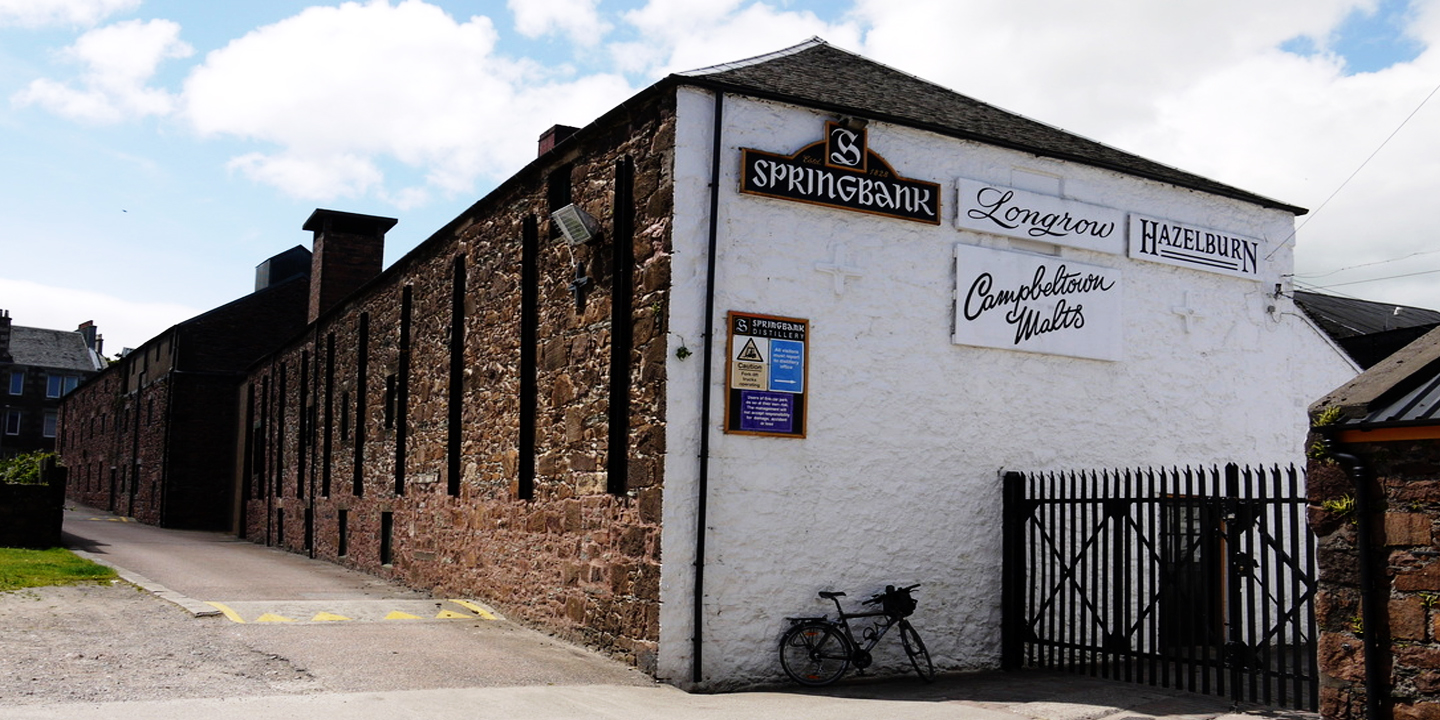Springbank: An Enduring Campbeltown Distillery
About the Distillery, Campbeltown
There are several qualities that make Springbank distillery unique, and its whiskies so loved in the whisky world today.
Springbank distillery may be known to most as the maker of some magnificently peaty and intense whiskies, but what really makes this much loved distillery stand out for us is the people who work there: their resolve and continued belief in the traditions of Scotch whisky production.
The distillery is located in the Campbeltown region, which was once known as the whisky capital of the world. Once home to over twenty-eight distilleries, Campbeltown has only three operational distilleries now, including Springbank, Glengyle, and Glen Scotia. Glengyle is owned by J & A Mitchell and Co Ltd, the family that owns Springbank, so it’s safe to say that the Mitchell family have firmly held their position in the region through time.
Springbank is one the few family-run distilleries in Scotland today, despite the difficulties the family has had in scaling up to meet demand.
Springbank is also one of the two distilleries in the country to carry out every step of the production process on site. This system has seen Springbank grow more self-reliant throughout the years. They even bottle their whisky on site.
History
Springbank was established in 1828 by the Reid Brothers, who were in-laws of the Mitchell family. Springbank became the 14th licensed distillery in town and due to the increase of demand, Mary Mitchell established Drumore distillery in 1834.
Amidst financial difficulties the Reid Brothers sold the distillery in 1837, to John and William Mitchell, and the distillery has stayed in the family ever since.
The flavour of Springbank whisky thrived and developed. While many distilleries in the region turned to cost-cutting and shortcuts in production, which eventually saw many of them close, Springbank survived for many years.
After shutting down temporarily in 1926, due to the effects of Prohibition, the distillery began operating once more in 1933, and at this time it was one of only two distilleries producing whisky in the region. The distillery began to thrive once more.
Unfortunately, the distillery shut down once more in 1979, due to the difficult economic state in the UK, and reopened almost a decade later, with only a limited production.
Demand for Springbank whisky began to grow once more, and the oldest family-run distillery in Scotland continued to thrive to this day.
Whisky
Springbank releases three very different single malt whiskies: Springbank, Longrow, and Hazelburn. This variety in their headline bottles makes them very different to most distilleries, who produce whiskies of similar character.
Springbank Single Malt 10 year-old is the most popular range, aged in sherry and bourbon casks. It’s non chill-filtered and has no added colour. There are also 12, 15, 18, and extremely rare 21 year-old releases.
Longrow Single Malt received Best Campbeltown Single Malt at the 2013 World Whisky Awards. It is extremely peaty and highly popular among lovers of intensely flavoured, smoky whiskies, a statement that a great peated whisky can be produced on the mainland of Scotland. The Longrow is available in three varieties, Peated, Red, and 18 year-old.
Hazelburn is the distillery’s newest release, first distilled in 1997. There are 10 and 12 year-old releases, and the flavour is rather different to other Springbank whiskies. It’s non-peated and brings light, subtle, fruity notes to the palate.
Here at the Whisky Foundation we offer some very rare Springbank bottles, not easily found elsewhere. Have a look at:



